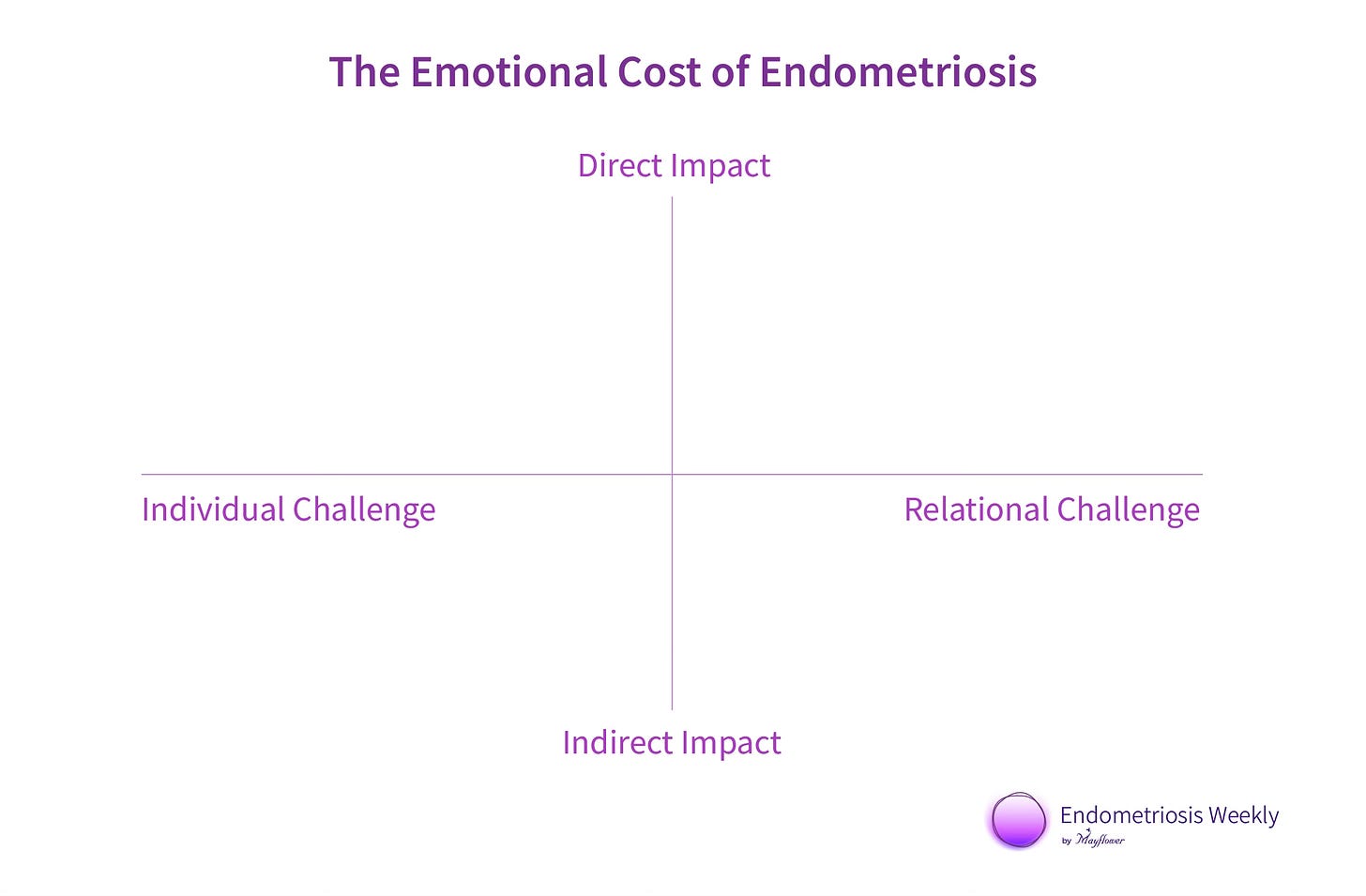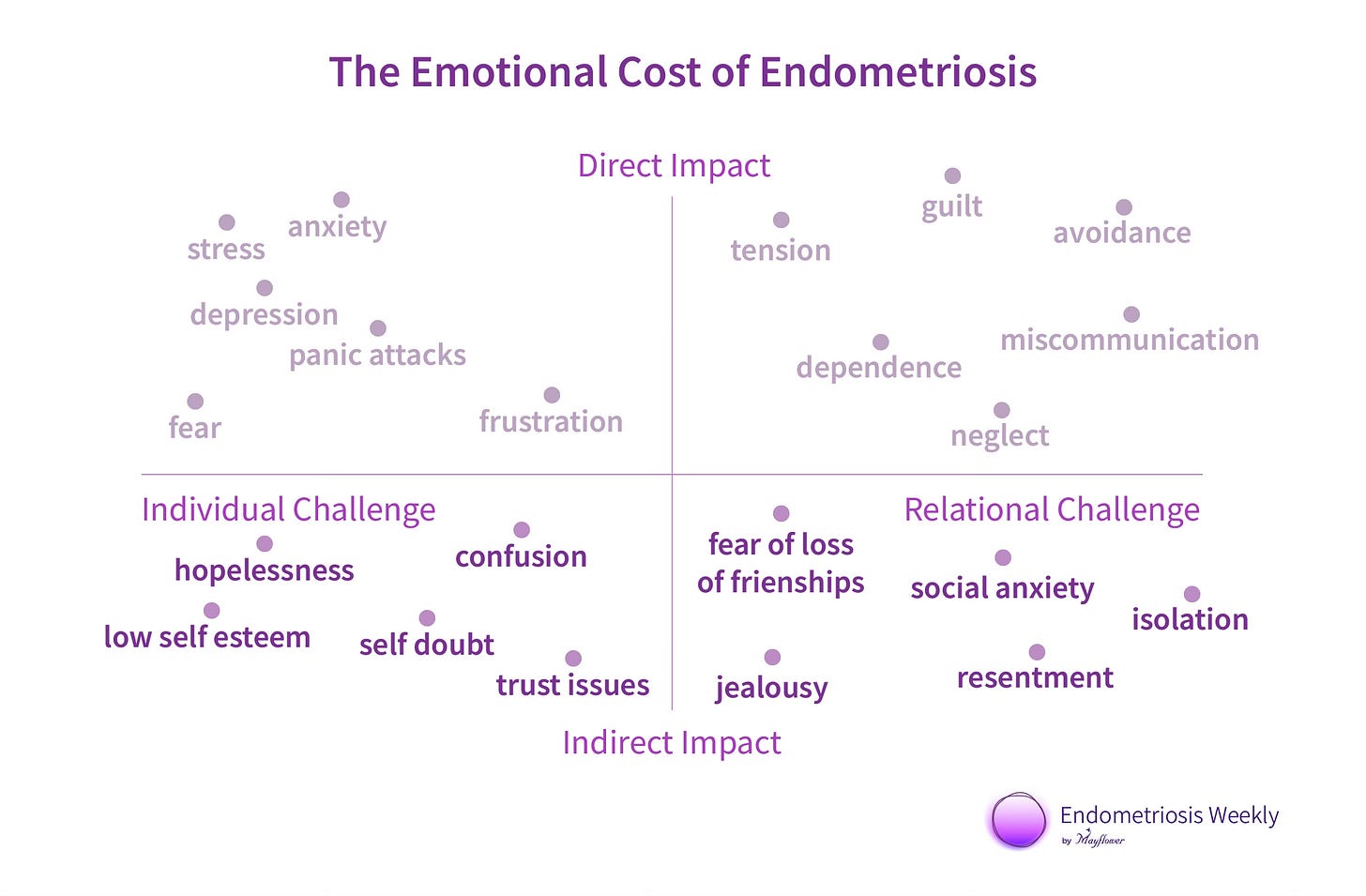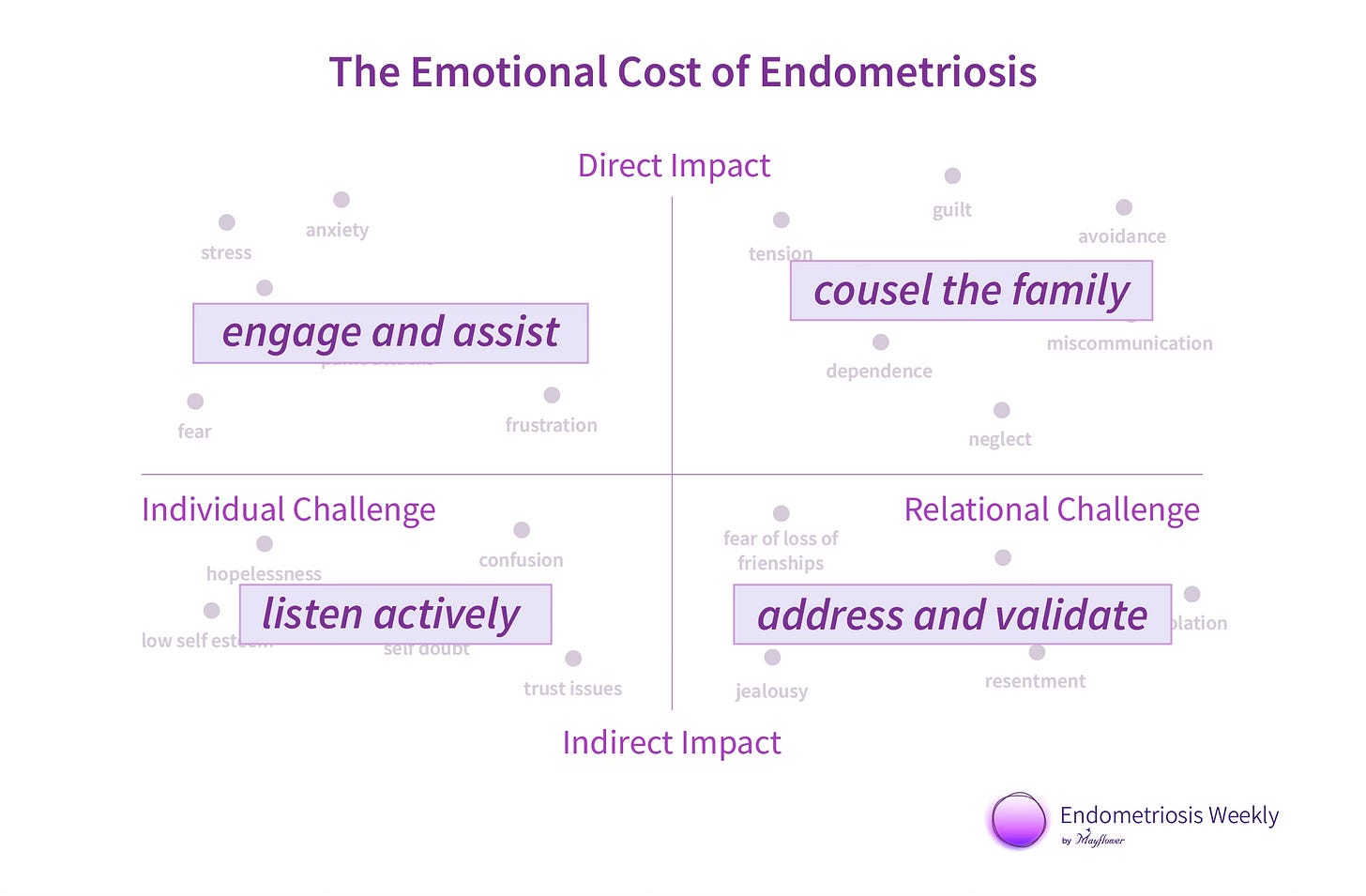The Silent Struggle: How Endometriosis Shapes Lives and Minds
And how a surgeon can help solve it
What often gets missed in the aggressive push towards building skills and techniques for disease handling and the advancement of technology, is the need for understanding the human cost of the disease.
A lot of the progress we’ve been able to make in treating the disease has occurred in large part due to our understanding of the human cost of endometriosis. It was the motivation to reduce that cost which led gynecologists to explore every system it impacts, from vascular to renal, to gastrointestinal.
One aspect however that often gets missed is the psychological impact that the disease has on its victims. While everyone talks about the pain and discomfort of endometriosis, and by itself it is enough reason to pay attention, a lot of the second order effects of pain deserve our attention just as much.
Today, we breakdown the personal and relational impact of endometriosis, and how it makes our patients suffer. And through this exploration, we invite you to think more deeply about we can alter our practice and appraoch to the disease to address these aspects better.
Let’s break these down into two aspects. Individual Challenges, or challenges that patients face by themselves, and Relational Challenges or challenges that involve social settings or other people from their immediate circle of interaction.
Individual challenges include
Stress — of having to manage daily life along with the disease
Anxiety — of the unpredictable nature of disease flare ups
Depression — caused by the unending and unforeseen life disruptions caused by endometriosis
Frustration — from the lack of understanding of the disease and the extent of its impact on their lives
Loss of Identity — owing to the long term suffering and containment caused by the disease
Panic Attacks - triggered by the symptom flare ups
Distress — from a delayed or incomplete diagnosis of the condition
Sleep and Mood — disturbances caused by the nature of the disease
Fear — of pain during daily activities
On the other hand, relational challenges come with just as broad a range
Miscommunication — first with partners and family, and then with colleagues and friends that can leave women feeling misunderstood and exhausted
Tension — with family members over misunderstandings about the condition
Difficulties — in planning life events
Guilt — from an inability to contribute equally in a relationship
Neglect — from friends, family, and relationships
Avoidance — of social situations to prevent discomfort
Dependencies — on partners or parents, creating a power imblance and a feeling of insufficiency
This however is just the tip of the ice-breg. Subsequently, in relation to these seemingly direct effects, there are a lot of indirect consequences or costs that patients have to bear.
This gives us a specturm. And as EW tradition, every specturm gets turned into a graph.
Filling the top half of the chart is easy. It’s all the things we’ve already discussed before. Let’s quickly put them on the chart
The indirect impacts can be more tricky, and less apparent to the eyes, but still abundantly present.
Low Self Esteem is the first. The depression, and stress of the disease, coupled with the social rejection from the idea of life, presents a strong self hatered whose first victim is self esteem.
Trauma — from previous procedures, or failed attempts at managing the symptoms becomes another effect that doesn’t find enough conversation.
Overthinking, and worrying, especially on how your closest friends and family perceive you
Self Doubt — on your ability as a parent, a spouse, or a daughter.
On the relational side, the direct effects make way for indirect interjections
There’s isolation, from all the care needed to manage the pain and discomfort
Loneliness from bailing out of important social interactions
Social anxiety made true by the uncertain flare ups
A fear of losing friendships that comes with the isolation
Jelousy towards those not facing the same problems as you
Resetnment towards partners incapable of understanding the disease
Soon as we add these to the graph, the picture begins to look complete
Put together, it is an elaborate map of all the things that someone could simulatenously be going through when they approach you for treatment.
Helping patients with all these problems might not be possible, or even your expertise. But it helps to know that they are going through this, and that if left unmanaged, these emotions can often lead to bigger breakdowns, often rendering the act of sugery itself meaningless.
Managing these aspects therefore becomes critical towards ensuring a complete delivery of case. Depending on how a certain person displays challenges, as a gynecologists we may choose to take a different route.
Regardless of how we might choose to deal with these challenges, being aware of them, and acknowledging them when we see them in our patients, without trivialising or normalising them is important to help them feel safe, secure, and cared for.
That’s it from us this week. If you have thoughts, experiences, or questions, please feel free to write to us at ew@mayflowerhospital.com












